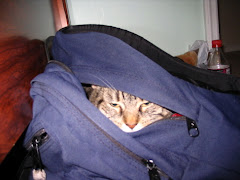
National Chemistry Week is a community based annual event that unites ACS local sections, businesses, schools, and individuals in communicating the importance of chemistry to our quality of life. The elements are the basis of the entire universe and of life on Earth. Elements are an important part of everyday life -- they compose the graphite in pencils, the tungsten in light bulbs, neon lights, copper for cooling applications, the sodium in table salt — the list literally never ends!
National Chemistry Week is a wonderful opportunity to investigate and appreciate the discovery and use of the elements in every aspect of our lives. Here are some books and resources for young readers about science and chemistry. Visit the National Chemistry Week site, and look for these books using the World Catalog and Amazon search boxes here on BookBag.

Apples, Bubbles and Crystals: Your Science ABCs. "A" is for apple. What makes apple slices turn brown? "B" is for bubbles. How can you make bubble solution from items you can find around the house? "C" is for crystals. How are crystals made? Children can study the alphabet and learn science at the same time with Apples, Bubbles, and Crystals: Your Science ABCs. Each letter of the alphabet features a poem about a cartoon creature along with a related science activity that you and your children can do together! Each activity is illustrated with step-by-step instructions, and simple explanations for the science behind each activity are printed in the back of the book.
National Chemistry Week is a wonderful opportunity to investigate and appreciate the discovery and use of the elements in every aspect of our lives. Here are some books and resources for young readers about science and chemistry. Visit the National Chemistry Week site, and look for these books using the World Catalog and Amazon search boxes here on BookBag.

Apples, Bubbles and Crystals: Your Science ABCs. "A" is for apple. What makes apple slices turn brown? "B" is for bubbles. How can you make bubble solution from items you can find around the house? "C" is for crystals. How are crystals made? Children can study the alphabet and learn science at the same time with Apples, Bubbles, and Crystals: Your Science ABCs. Each letter of the alphabet features a poem about a cartoon creature along with a related science activity that you and your children can do together! Each activity is illustrated with step-by-step instructions, and simple explanations for the science behind each activity are printed in the back of the book.
Sunlight, Skyscrapers, and Soda Pop. Where can you find science? All around you! Children can learn the science behind everyday activities with Sunlight, Skyscrapers, and Soda Pop. Follow Sally and Sammy, the cartoon siblings in this story as they discover science in the kitchen, at the park, in t
 he bathroom, at a friend’s house … everywhere! Every time they make a discovery, they stop to do a science activity that you and your children can do together. Sally and Sammy model how to do each activity with illustrations and clearly written instructions. After reading the story and doing the activities, you can take part in a science search challenge! Challenges and challenge answers are listed at the back of the book, where you’ll also find explanations for each science activity.
he bathroom, at a friend’s house … everywhere! Every time they make a discovery, they stop to do a science activity that you and your children can do together. Sally and Sammy model how to do each activity with illustrations and clearly written instructions. After reading the story and doing the activities, you can take part in a science search challenge! Challenges and challenge answers are listed at the back of the book, where you’ll also find explanations for each science activity.Chemistry for Every Kid, by Janice Van Cleve (Josey-Bass) Why do newspapers turn yellow? How does bleach make colors disappear? Why can't you mix oil and water? Find out the answers to these and other mysteries of chemistry in this fascinating collection of ideas, projects, and activities that teach the basics of chemistry theory and practice.
Science Experiments You Can Eat, by Vicki Cobb (Harper Trophy) Your kitchen will be transformed into a laboratory worthy of a mad scientist as you make startling discoveries about how cabbage can detect acid, how bacteria makes yogurt, and how decomposed sugar turns to caramel. Then after a long day at the lab you can relax and eat your results: soup, biscuits, pretzels, cupcakes, or cookies.
Eyewitness Science - Chemistry, by Dr. Ann Newmark (Dorling Kindersley) How doe s a catalytic converter work? Why does a bee sting hurt? Find the answers to these and other questions in this new look at the story of chemistry.
s a catalytic converter work? Why does a bee sting hurt? Find the answers to these and other questions in this new look at the story of chemistry.
 s a catalytic converter work? Why does a bee sting hurt? Find the answers to these and other questions in this new look at the story of chemistry.
s a catalytic converter work? Why does a bee sting hurt? Find the answers to these and other questions in this new look at the story of chemistry.More chemistry resources
There's a whole list of chemistry links with information and further book lists for parents and kids at the About.com website. There are also ideas for experiments you can try at home or school, and guides for older kids interested in learning more.









No comments:
Post a Comment